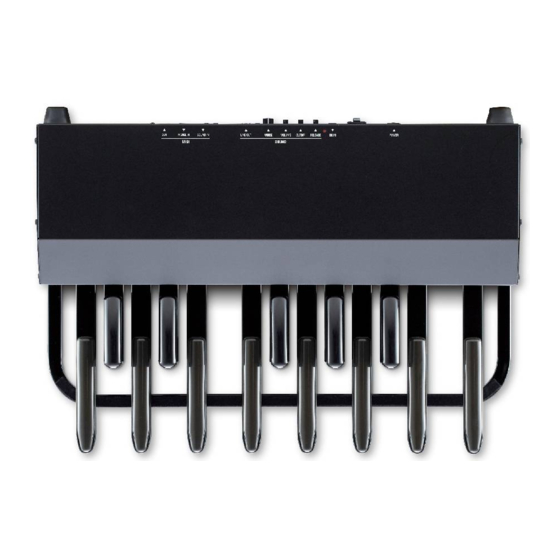
Advertisement
MIDI SOUND PEDALBOARD
Model:
Thank you, and congratulations on your choice of a Hammond
MIDI sound pedalboard!
The XPK-130G has 13 pedals (C to C), while the XPK-200G and
XPK-200GL both have 20 pedals (C to G). In addition, the XPK-200GL has
wooden naturals of extended length, to make "heel and toe" playing style
easier.
In addition to the MIDI capabilities, these units also contain 5 built-in Pedal
Voices, allowing you to use them as "stand-alone" units.
In order to get the most out of this instrument for many years to come,
please take the time to read this manual carefully and in its entirety.
Owner's Manual
Contents
P.2
P.4
P.5
P.6
P.8
P.9
P.10
OTHERS
P.12
Advertisement
Table of Contents

Summarization of Contents
Important Safety Instructions
General Safety Precautions
Covers unit operation, environmental conditions, and preventing foreign object entry.
Electrical Safety and Hazard Response
Details power cord handling, outlet safety, and actions for unit damage or malfunctions.
Environmental and Child Safety
Addresses child supervision, foreign country use, and avoiding water/chemical proximity.
Names and Functions
Top Panel Controls
Identifies and explains controls located on the top panel of the unit.
Rear Panel Connections
Details the various jacks and ports found on the rear panel of the unit.
Accessories and Components
Lists and describes included accessories and their usage.
Mounting the Expression Pedal
Mounting the EXP-100F/50/50J
Step-by-step instructions for mounting the EXP-100F/50/50J pedal.
Mounting the EXP-20 or V-20R
Step-by-step instructions for mounting the EXP-20 or V-20R pedal.
Making the Connections
Preparing Unit for Use
Steps to prepare the unit for operation, including AC adapter connection.
Hook-up Example 1: MIDI Pedalboard
Guide for connecting the unit as a MIDI pedalboard to another instrument.
Tips: Setting MIDI Channels
Instructions on how to set MIDI channels for proper communication.
Using the Internal Sound Generator
Selecting a Pedal Voice
How to choose from the five built-in Pedal Voices.
Adjusting the Sound
Controls for Volume and Cutoff frequency of built-in voices.
Release Knob (Pedal Sustain)
Adjusting the note's decay time after pedal release.
How to Control Parameters by MIDI
Using an external MIDI controller to manage unit parameters.
MIDI Channel, Merge
Setting the MIDI Channel
Procedure to change the transmitting and receiving MIDI channel.
The MIDI MERGE Function
How to merge MIDI information from MERGE IN with MIDI OUT.
Important Notes on MIDI Merge
Key considerations and warnings regarding MIDI MERGE usage.
Advanced Operation
Auto Power OFF
Setting the automatic power-off feature for energy saving.
Velocity Curve
Adjusting how note response changes with playing velocity.
Master Tune and Brightness
Master Tune Adjustment
Changing the master tuning frequency of the built-in sound generator.
LED Brightness Control
Adjusting the brightness level of the top panel LEDs.
Load Default Values
Restoring the unit to its original factory default settings.
MIDI Implementation Chart
Function Transmitted/Recognized
Details MIDI functions transmitted and recognized by the unit.
MIDI Modes and Messages
Explains MIDI modes, messages, and their respective meanings.
Specifications
XPK-130G Specifications
Technical details for the XPK-130G model.
XPK-200G Specifications
Technical details for the XPK-200G model.
XPK-200GL Specifications
Technical details for the XPK-200GL model.
Regulatory Compliance
Information regarding FCC and Canadian compliance.
Service Information
Contact Information
Provides contact details for Hammond support in the US and Europe.
Manufacturer Details
Information about the manufacturer, SUZUKI MUSICAL INST. MFG. CO., LTD.





Need help?
Do you have a question about the XPK-200G and is the answer not in the manual?
Questions and answers